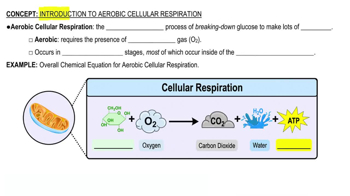Textbook Question
What is a fiber composite? How do cellular fiber composites resemble reinforced concrete?
1822
views
 Verified step by step guidance
Verified step by step guidance



 3:38m
3:38mMaster Introduction to Cellular Respiration with a bite sized video explanation from Bruce Bryan
Start learning